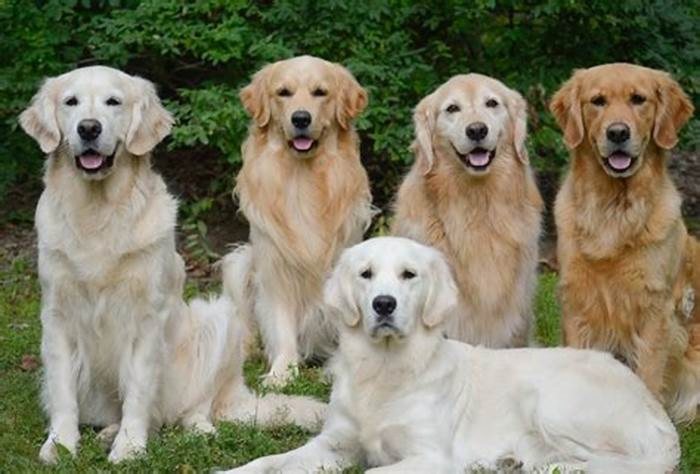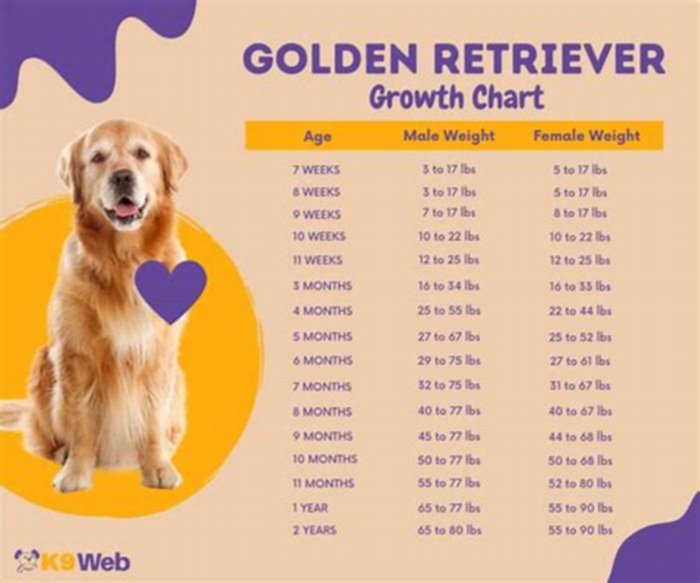How to tell if a Golden Retriever is purebred

All You Have Ever Needed To Know About A Purebred Golden Retriever
Updated: May 16th, 2022
This article contains affiliate links. Read the full disclosure here.

One breed you will fall in love with right off the bat is a purebred golden retriever. It doesnt matter whether you are a single individual or have a family, trust this sweet beauty to win your heart. Because its one of Americas favorite breeds, though, you have to be careful not to fall for the wrong one.
Dont take your breeders word as gospel when you are picking a pup. Take time to find out whether the pup is truly purebred. Dont know how to go about that? Ive got you covered.
Its also important for you to know this breeds history and other relevant facts; you are likely going to need all this info for various purposes at some point as a pet parent. I discuss it all and even answer some of the most pressing questions you may have about this dog. Shall we begin?
The History Of The Purebred Golden Retriever
Golden retrievers have a rich history. They trace their roots back to Scotland, where Lord Tweedmouth bred them for hunting. He was a keen waterfowl hunter but he also wanted a dog that could be loyal, friendly, and even-tempered while at home.
Thats what led him to buy Nous, a yellow retriever, which he cleverly bred to Belle, a Tweed water spaniel. Belles descendants were then bred with another Tweed water spaniel, and a red Irish setter was added to the mix.
All this happened between 1840 to 1890. Tweedmouth kept a breeding record that now shows what he was trying to achieve a hunting dog that also had the traits of a family pet.
Even though now extinct, Tweed water spaniels were ardent retrievers and in the home they were friendly, loyal, and calm. Todays goldens share the same attributes.
Tweedmouth gave some of Belles descendants away and kept others, specifically the yellow puppies, which he continued to breed. It wasnt long before his breed gained the interest of sports hunters and show fanciers. They all fell in love with the dogs retrieving abilities, beauty and other traits.
Englands Kennel Club officially recognized these retrievers as a breed in 1911. Back then they were simply known as retrievers, but in 1920 their name was changed to golden retrievers.
Fast forward to 1932, when the American Kennel Club (AKC) registered the golden retriever as a breed too. In the following years, the AKC changed the Golden Retriever breeding standards to suit the tastes and needs of Americans. Right now, goldens are a popular breed in the US, rivaling Labradors, German shepherds, and French bulldogs.
How To Identify A Full Breed Golden Retriever

Top on the list of ways to identify a pure golden retriever is to check whether it has the right paperwork and pedigree. Proper documentation is proof that the dog has been registered with a well-recognized kennel club or certified registry that keeps records for that specific breed. Meet the three types of golden retrievers.
In North America, the American Kennel Club (AKC) is the largest and most popular kennel club but there are a few other legitimate registries as well such as:
- Canadian Kennel Club
- United Kennel Club
- Continental Kennel Club
For a pup to qualify for documentation, its parents must have been listed with a certified registry. A dogs pedigree is like its family tree, which should date back four generations or more and be properly documented. The ancestors names should be featured in the paperwork.
Heres what the paper should contain:
- The dogs name plus registration number
- Colors
- Markings
- Health-related information
- Competition titles its parents or ancestors held
In instances where you have a pup that lacks documentation, ask the breeder or whoever sold it to you to hand over the correct papers to you. Once you obtain them, you only have to pay a small fee, fill up the registration documents and mail them to the relevant registry for processing.
Thats one way to identify a full breed golden retriever; unfortunately, its not enough to tell how your pup will turn out. To be one hundred percent sure that your golden is purebred, check to see if it has the features that define such a breed. These are the unique characteristics purebred golden retriever puppies should have.
Unique Attributes A Golden Retriever Purebred Should Have
Size & Body Structure
Male golden retrievers weigh between 65 to 75 pounds and have a height that ranges from 23 to 24 inches. Females, on the other hand, weigh between 55 and 65 pounds and are usually 21.5 to 22.5 inches tall. Both genders reach full height after turning one-year-old and mature weight by the age of two.
Structurally speaking, goldens have a symmetrical muscular build and look very athletic. Size-wise, they are classified in the medium to large category. Also, note that their hind limbs are strong and straight while the shoulders are well-built and rugged.
Personality
Goldens are defined by their sweet, soft, easy-going demeanor. They get along well with pretty much everyone, including kids, and are always eager to please the owner, but these and other great attributes will only be apparent if you train and raise them well.
Coat & Hair
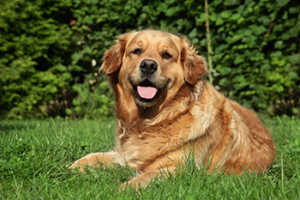
Full-blooded golden retrievers come in different shades of gold, from pale to dark. You may have seen some breeders and puppy mills classifying some as rare white, platinum or English cream, but understand that these arent special or rare; these are European-bred goldens.
All goldens have a thick undercoat and a dense outer coat that is resistant to water and requires regular grooming with one of the best brushes for golden retrievers. Some have wavy coats, while others are straight.
Their fur feathers on the chest, underbelly, along the tail, and on the back of their front limbs. Shedding is heavier in the fall and spring and moderates in the summer and winter.
To keep their beautiful coats in top shape, clean, and free of fleas, use one of the best flea shampoos for dogs.
Other special characteristics of purebred goldens to watch out for include:
- Short ears that can fold over
- Fairly or dark brown medium-large eyes with dark eye rims
- A thick tail that is muscular at the base and curved upwards at the end
How Long Do Purebred Golden Retrievers Live?
Based on statistics, golden retrievers have been found to live an average of 10-12 years; however, if you go the extra mile in taking proper care of your golden, she can live longer than that. Augie, the oldest known Golden retriever, passed away at the age of 20.
Just as a reminder, taking good care of a golden retriever involves the following:
- Proper diet
- Appropriate exercise
- A loving home
- Socialization
- Great healthcare
Frequently Asked Questions
How much is a purebred golden?
Legitimate and trusted breeders price their goldens anywhere between $1500 and $3500. The price could be as low as $500 if you choose to buy from no-name breeders and puppy mills, but be aware that the risk is higher on this side. Your purebred golden retriever puppies could end up suffering health problems later.
How do you get a full-blooded golden retriever?
It may be tempting to simply do a search and order a pup from the first breeder that shows up on your search engine but I wouldnt recommend this option. Instead, contact the AKC or a certified registry near you and ask them for a referral to a trusted breeder. I cover more tips you can use here.
Can a purebred golden retriever have white on them?
Golden retrievers are never entirely white. Some may have white patches on the chest and/or toes, but thats the most you may get today. English cream golden retrievers come close but they are still not white. Their coat color ranges from pale cream to dark gold.
A Last Word On Purebred Goldens
Pure golden retrievers are excellent dogs that get along well with everyone, from children and single individuals to families. If you are thinking of getting one, rest assured that you will have a great companion. Just make sure that you are ready to take proper care of them, because this is what will give you the best possibility of a longer lifespan for them.
Three things you should never forget about golden retrievers and which will help you identify one are:
- They are sweet, loyal, calm, and eager to please the owner
- They come in different color shades, ranging from pale cream to deep gold
- They are muscular and athletic with a medium-large size body
Also important to mention is that goldens love being around people and need regular exercise to prevent destructive behavior. They are also prone to a few health problems, but with proper care and help from a vet, you will be able to help them live a comfortable life.
How To Identify A Pure Golden Retriever Puppy
If this is the first time you're getting one of these babies, you do not want to buy wrongly. If you don't know much about purebred golden retrievers and you go ahead and buy one anyway, you might later find yourself questioning your choice later. Golden retrievers are known for their positive temperaments, traits, and also playful nature. If you buy a purebred golden retriever pup, it will grow into these traits as it grows.
It is hard not to love a purebred golden retriever. They're affectionate, loyal, adaptable, love to play, easy to train, and are great family dogs. People of all ages adore them. Before going to a pet shop or breeder, you should be able to identify a pure breed golden retriever. Some of the reliable means of identification include:
Proper Documentation and pedigree
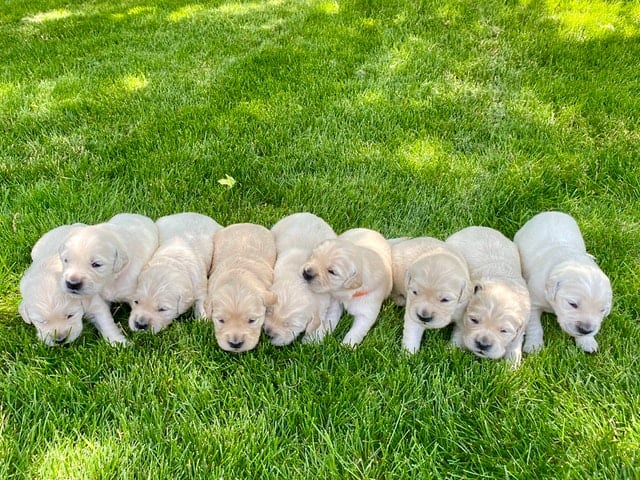
This is the most reliable method of identification. It shows that the pup has already been registered with a specific registry. Examples of such registries include American Club (AKC), Canadian Kennel Club, the United Kennel Club, and the Continental Kennel Club. Documentation indicates that the pup qualified for Documentation because its parents have been registered with the registries. AKC certified pedigree contains:
- The Dog's name and registration number.
- Colors and markings.
- Competition titles held by the pups ancestors.
- Any health-related information available.
As the owner, you should take the precaution of making a follow-up and registering your pup yourself. All you need to do is pay the fee and mail out a registration application. You can only claim full ownership of the pup after the breeder has handed over the papers to you.
The pedigree is like the pup's family tree and usually dates back to at least four generations and contains the registered names of its ancestors.
Although pedigrees are reliable, there are other ways to identify a pure breed golden retriever and adopt one of those lovelies for yourself, even if there are no papers. After all, the absence of paperwork doesn't make a pure breed golden retriever less so.
Appearance

While many retrievers can look alike, pure breed golden retrievers have features unique only to them and can't be found in other retrievers. They're usually muscular and considered symmetrical with a strong back and straight legs, with smooth, free gait.
Take their ears, for example; golden retrievers have short ears that can also fold over. Their ears are always located behind their eyes and just above the eyes. The tips fall over to the cheeks and can be pulled to cover their eyes.
Purebreed golden retrievers also have medium to large-sized eyes colored within the range of slightly brown to dark brown and dark rims. This feature makes golden retrievers look intelligent.
And don't forget the tail. Pure breed golden retrievers have thick tails that are muscular at the base, with the end of the tail slightly curved upwards. You won't find a golden retriever's tail completely curled it tucked between its legs. The length usually varies from 4 to 12inches.
Examine the coat
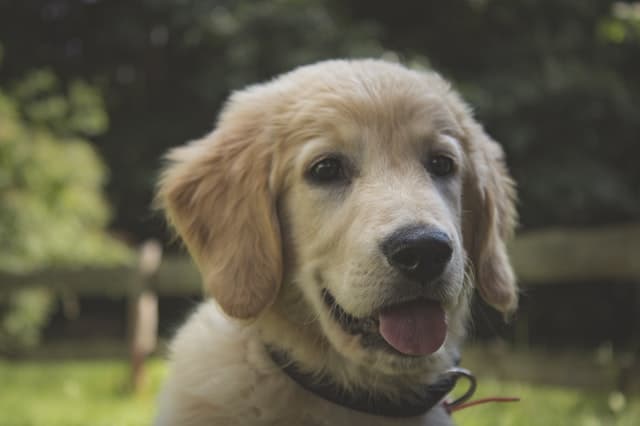
Another way to identify a golden retriever is through its coat. First, the coat must be dense and waterproof. Golden retrievers have a substantial amount of dense water repellent outer coat with a thick warm coat underneath. Their coats can either be wavy or straight. You should also note the color of their coat. Golden retrievers are a rich lustrous gold in different shades ranging from dark golden, light golden, cream golden, red golden, and white gold.
Golden retrievers also have feathering on their legs, tail, neck, and underbody and are lighter than the rest of the coat.
Temperament
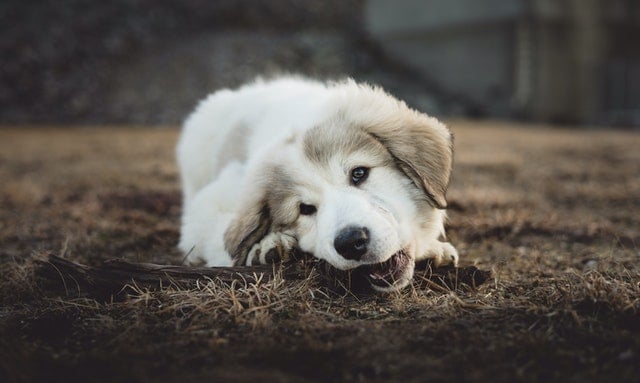
Although in varying degrees, pure breed golden retrievers exhibit the same unique behavioral traits and characters. To confirm if the puppy is a golden retriever, you can check how active the pup is. Golden retrievers are very athletic and active; they need long hours of regular exercise before they can be satisfied, so rarely will you see a gentle golden retriever. Although, if they don't have things to be occupied with, they're often bored.
Also, golden retrievers are fiercely loyal to their owners and the people they spend the most time with. They're also adaptable as they can live in peace with other animals and are trustworthy, so they make great family pets. Try to look out for these qualities in the pup, as it'll help you identify if it's a pure breed golden retriever or not.
Price
Purebred golden retrievers are usually pricey than other dogs. Rarely will you get one below the $1000 mark? This reason for their expensive amounts is because of the extremely high demand for these dogs. If you're looking to adopt a purebred, you should be willing to spend a lot provably to get one.
The Different Purebred Golden Retriever Breeds

When buying a purebred golden retriever, you should be aware that there are three different types of the purebred golden retriever, namely the Canadian Golden Retriever, the American Golden Retriever, and the British Golden Retriever. However, the three breeds have similar temperaments, personalities, health, and quality of life. Each has distinct features that differentiate the three breeds, although the differences are negligible.
Canadian Golden Retrievers
Of the three breeds of the purebred golden retriever, this breed is most unique. The Canadian Golden retriever is usually taller than other breeds, it has an average of 2inches on them, and its hair is also shorter and slightly thinner. It is the most handsome of the three breeds.
American Golden Retrievers
This breed is slightly leaner than its counterparts. It is also not as strong as the other two breeds. Their fur coats are also darker, although they're the same height as the British breed. You can also identify the American breed with its eyes, the pupils if this breed is not fully rounded but rather slanty, forming a sort of triangular-shaped pupils. They've also colored a lighter shade of brown.
British Golden Retrievers
Also called English Golden Retrievers, their long, dense coat quickly identify them. Although they're pretty shorter than the Canadian breed, they're equally as strong. British golden retrievers have more powerful front legs and broader skulls than their counterparts, and their eyes are colored a darker shade of brown.
How To Care For A Purebred Golden Retriever
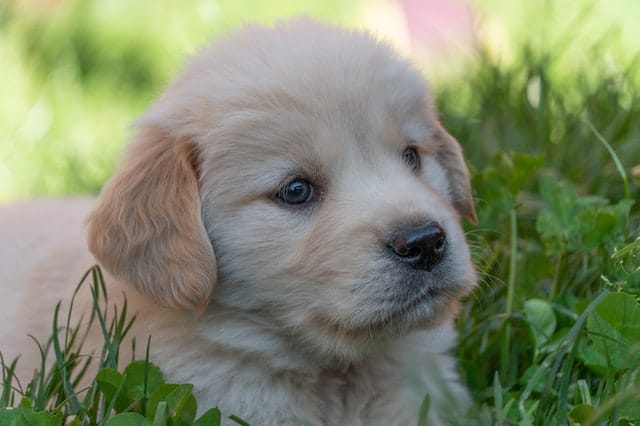
There's still work to do after buying a purebred golden retriever; you should get acquainted with the fact that golden retrievers have living needs that must be satisfied to have a happy, healthy pet. Golden retrievers do not like to be alone; these beautiful creatures cherish companionship more than anything. They love to be seen as a member of the family and treated as such. So its vital you learn how to socialize your puppy with other dogs and humans as well.
They're especially great in homes with kids as they are entirely comfortable with the noise, commotion, and non-stop activities children like to involve in. Besides, they are tolerant of other pets, so if you're a cat lover as well, you shouldn't worry about your two pets not getting along. Rabbits, other dogs, or pets are also safe with them. Also, they love playing a lot outdoors.
Feeding is essential to retrievers, although their owners should help manage their food intake as they tend to be overweight. Food should be measured and served twice daily, and you should give dog treats moderately. Exercising is also vital, and retrievers are supposed to exercise at least once daily. They have to let off a lot of steam through several activities, or else they direct their energies to unappealing behaviors like digging and chewing.
And if you are getting golden, be warned that they shed terribly, and you shouldn't be surprised to find fur even in the worst places. You can help reduce shedding by brushing them regularly. This way, you can detangle their fur and get rid of dead hair before it gets attached to available surfaces. Monthly baths are also recommended. Although, ensure your goldie is completely dry before brushing it.
You should have their nails trimmed regularly, about twice a month if you don't want them tearing into stuff. Their teeth should also be brushed periodically, about two to three times a week. Their ears fold over, creating an environment for organisms to grow, so ear care is vital. Watch out for signs of infections and clean their ears with cotton balls soaked in pH-balanced ear cleaner to reduce the risk of diseases.
Purebred golden retrievers are generally healthy and live for about 10-12 years. But when compared to other dogs, they risk having hip dysplasia and cancer. They are also at risk of other conditions like cataracts, hypothyroidism, allergies, and other diseases. Regular checks up should be done to keep them in perfect health.
Conclusion

Purebred golden retrievers are fine animals suitable as pets by people of all ages, and now that you know what to look out for when choosing one, you should adopt one of these puppies and get you a pet to love that loves you back.




